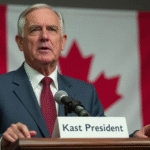Introduction to the SNA and Its Challenges
As the National Anti-Corruption System (SNA) marks a decade since its creation, former presidents of the Citizen Participation Committee (CPC) have criticized its failure to meet public expectations. The SNA faces issues such as governmental apathy, institutional sabotage, and leadership failure.
Background on the SNA
Jorge Alatorre, former president of the SNA, explained that it was designed as a coordination effort among authorities with powers to combat corruption. However, he noted that many of these efforts have been undermined despite the development of a national policy, an implementation plan, and a digital platform.
Key Factors Contributing to SNA’s Stagnation
Alatorre highlighted the weakening of executive secretariats at both federal and state levels as a significant factor in the system’s stagnation. He stated, “It is difficult for these agreements or policies to continue if they are sabotaged through attacks, discreditation, and clear campaigns of defamation.”
Additionally, Alatorre pointed out the distortion of citizen representation as another obstacle. “Citizen representation has been undermined,” he said. “The system cannot function if it loses its critical, consistent, and substantive nature.” He warned that when the focus shifts from oversight to pleasing those in power, the system loses its purpose.
Alatorre Flores also denounced the reluctance of certain states to provide required information on the national digital platform, leading to secretarial “decapitations” when pressured.
Magdalena Rodríguez’s Perspective on SNA’s Shortcomings
Former SNA president Magdalena Rodríguez echoed the sentiment that the system has not consolidated as an effective policy after a decade.
“There are no tools for the system to function,” she stated. “While we romanticize citizen-centricity, it has been more of a moral narrative than operational reality.”
Rodríguez emphasized the SNA’s victimization by institutional dispersion, as constituent entities like the Public Function Secretariat, the Federal Audit Office, and the Anti-Corruption Prosecutor act independently rather than in unison.
She also criticized the Committed Coordinator meetings devolving into mere reporting spaces instead of action-generating forums.
Rodríguez stressed that the SNA has faltered in crucial areas such as prevention, integrity promotion in public service, transparency, oversight, and citizen denunciation. “Nobody knows how, where, or what will happen if they denounce anything,” she affirmed.
Proposed Solutions for the SNA
Recommendations for Improvement
Jorge Alatorre suggested that the Coordinated Committee should start using its existing powers to issue reprimands and sanctions against negligent institutions. He also called for citizen representation to flag instances where audits fail to produce consequences or investigations stall.
Magdalena Rodríguez emphasized that the SNA must embrace any possibility—be it strengthening or reform—to counteract the evolving corruption mechanisms.






